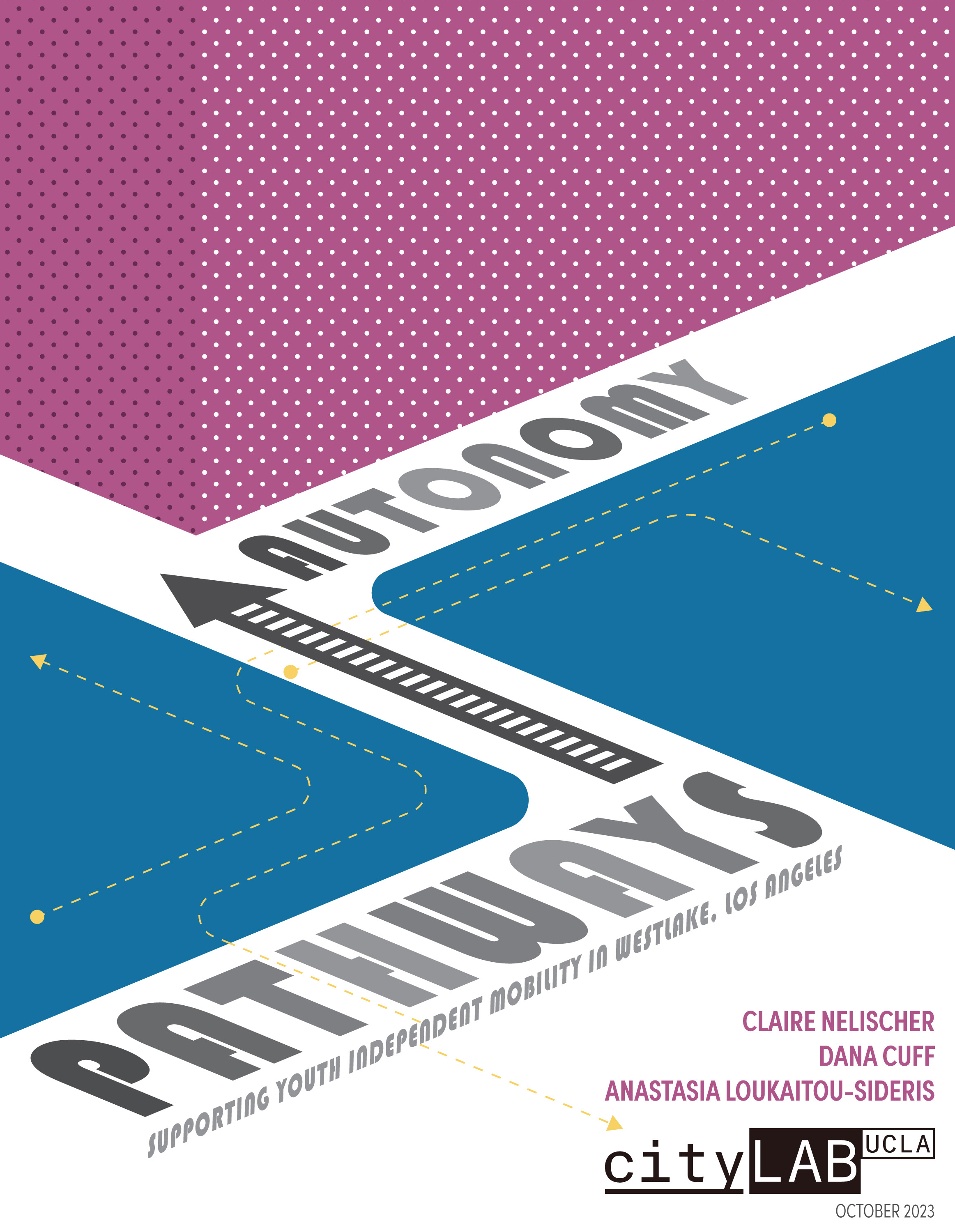Date: October 1, 2023
Author(s): Claire Nelischer, Dana Cuff, Anastasia Loukaitou-Sideris
Abstract
In this study, we use the concept of “sidewalk ecologies” to highlight the complex interaction between spatially situated social and material features of sidewalks that influence youth mobility. We use a range of interdisciplinary strategies, emphasizing youth-centered research methods and mapping to capture a rich portrait of the independent travel experiences, perceptions, and ideas of youth, in their own voices. This research was conducted in partnership with Heart of Los Angeles (HOLA), a communitybased organization in Westlake that provides after-school programming to thousands of neighborhood youths, and yielded important findings.
About the Project
Youth in dense, central neighborhoods often walk to school and are likely to be impacted by unsafe streets with higher proportions of pedestrian-automobile crashes. Despite Vision Zero and Safe Routes to School programs, they remain disproportionately represented among traffic fatalities, which are the highest in a decade. For these youth, social danger influences their choice to frequent traffic-heavy streets, as these arterials are perceived safer for walking than the quieter, desolate residential streets. Youth’s urban paths are informed by “hot spots” (where crime and crash data indicate danger) as well as “safe spots” (where data indicate safety from crime and vehicular injury) which, when combined with youth perceptions, impact routes to and from school.


